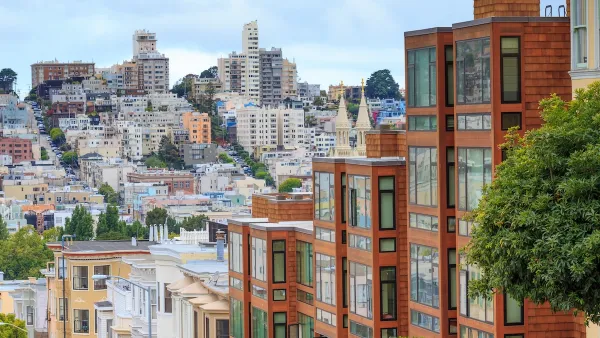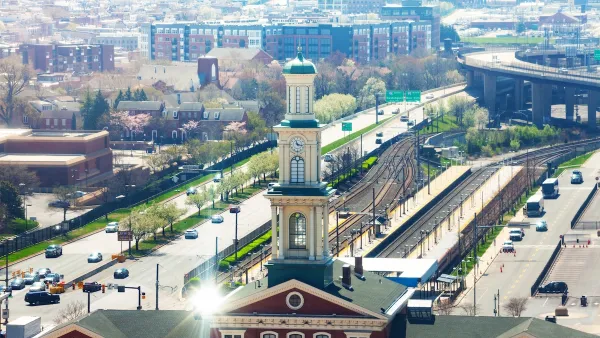Several factors are leading to the end of commercial strip development while simultaneously leading to more and more town centers and mixed-use facilities.
Ever since post-WWII sprawl, most commercial development in suburbs has involved narrow strips down single corridors. This trend is slowly coming to an end with several contributing factors, from changing demographics to the urbanization of those same suburbs.
Simultaneously, these factors are helping advocates of town centers, mixed-use development, and main streets. Edwards T. McMahon argues:
"At the same time that Wal-Mart, Target, Home Depot, and others are planning new urban stores all over America, as many as 400 former big-box stores sit vacant on commercial strips. Most analysts agree that urban neighborhoods are the new frontier for retail-the one place left with more spending power than stores to spend it in. At the same time that retail is rediscovering the city, the suburbs are being redesigned. Chris Leinberger recently declared that 'the largest redevelopment trend of the next generation will be the conversion of dead or dying strip commercial centers in the suburbs into walkable urban places.'"
FULL STORY: The Future of the Strip?

Maui's Vacation Rental Debate Turns Ugly
Verbal attacks, misinformation campaigns and fistfights plague a high-stakes debate to convert thousands of vacation rentals into long-term housing.

Planetizen Federal Action Tracker
A weekly monitor of how Trump’s orders and actions are impacting planners and planning in America.

In Urban Planning, AI Prompting Could be the New Design Thinking
Creativity has long been key to great urban design. What if we see AI as our new creative partner?

Car Designs Make it Harder to See Pedestrians
Blind spots created by thicker pillars built to withstand rollover crashes are creating dangerous conditions for people outside vehicles.

Cal Fire Chatbot Fails to Answer Basic Questions
An AI chatbot designed to provide information about wildfires can’t answer questions about evacuation orders, among other problems.

What Happens if Trump Kills Section 8?
The Trump admin aims to slash federal rental aid by nearly half and shift distribution to states. Experts warn this could spike homelessness and destabilize communities nationwide.
Urban Design for Planners 1: Software Tools
This six-course series explores essential urban design concepts using open source software and equips planners with the tools they need to participate fully in the urban design process.
Planning for Universal Design
Learn the tools for implementing Universal Design in planning regulations.
Appalachian Highlands Housing Partners
Gallatin County Department of Planning & Community Development
Heyer Gruel & Associates PA
Mpact (founded as Rail~Volution)
City of Camden Redevelopment Agency
City of Astoria
City of Portland
City of Laramie





























